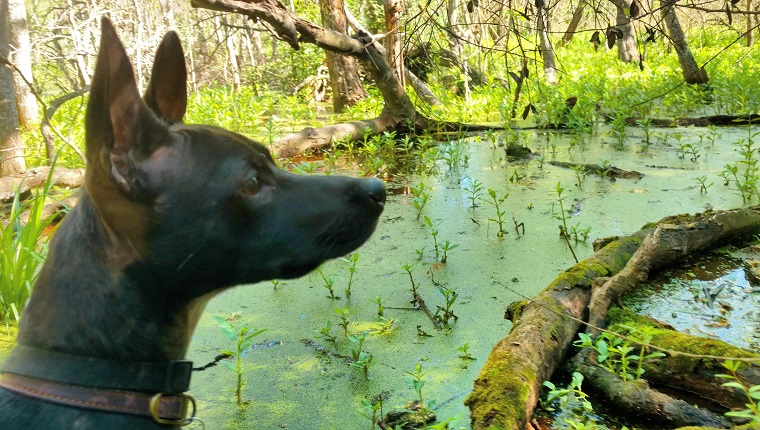Toxic, bluish-green algae blooms have been poisoning dogs across the United States during this hot summer, unfortunately with deadly results.
From the Pacific Northwest to the Carolinas in the East, many dog owners report that their pups fell ill after coming into contact with this toxic algae while out swimming in contaminated lakes and ponds. In fact, these intense algae blooms have led to swimming bans in lakes in the Pacific Northwest to the entire Mississippi seacoast.
The blooms have become a national concern according to research from the U.S. Environment Protection Agency since July. Here’s what you should know.
What Is This Toxic Algae Poisoning Dogs?
Algae naturally occurs in bodies of fresh water like ponds, streams, and lakes, with more forming when the weather is warmer. According to the Centers for Disease Control (CDC), freshwater toxic “algal blooms are most likely to form in warm, still waters that have a lot of nutrients such as phosphorous and nitrogen.”
But the substance in toxic algae that’s poisoning our pups originates from Cyanobacteria. This organism makes up the blue-green algae that produces toxins that make the freshwater blooms harmful. It can cause ailments in humans; however, dogs are more susceptible because they’re more likely to ingest the water.
The algae can look grainy, like sand, or appear as scum floating on the water. You may not see the algae if it stays under the water’s surface or attaches itself to plant life in the water.
Wind can also have an impact, blowing algae from one area of a body of water to another that might have been clear previously.
What Happens To Our Dogs If They Ingest These Toxins?

There are numerous health threats to our pooches if they ingest this bluish-green toxic algae in freshwater lakes or ponds. For one, they can start to have skin rashes all over their body and even start to show signs of neurological issues.
These blooms can also affect your dog’s liver, releasing toxins and causing organ damage. There are also reported cases of respiratory paralysis and other fatal conditions.
These symptoms and conditions can happen to your pup immediately after exposure to lakes, ponds, and streams contaminated with these toxic algae.
Melissa Martin and Denise Mintz in North Carolina with their three dogs went to a nearby pond to swim. Just 15 minutes after swimming in the pond and ingesting the toxic algae, all three dogs started having seizures and respiratory complications. They all immediately went to the nearest vet, but the toxins had done their damage. By the end of the day, all three pups tragically passed away.
“Prompt treatment is important in all cases of poisoning, but since blue-green algae attacks so fast, speedy intervention is critical. If you know your dog consumed algae, seek immediate medical care,” VCA Hospital states.
The best way to prevent such tragedies is to stay away from waters that seem murky or smell bad. Also research the different lakes and ponds in your area. See if your local department of environmental quality has posted anything mentioning toxic algae.
Do you take your dog to lakes and ponds to swim? Are you concerned about these toxic algae blooms and their effects on dogs? Let us know in the comments below!
Related Articles:




